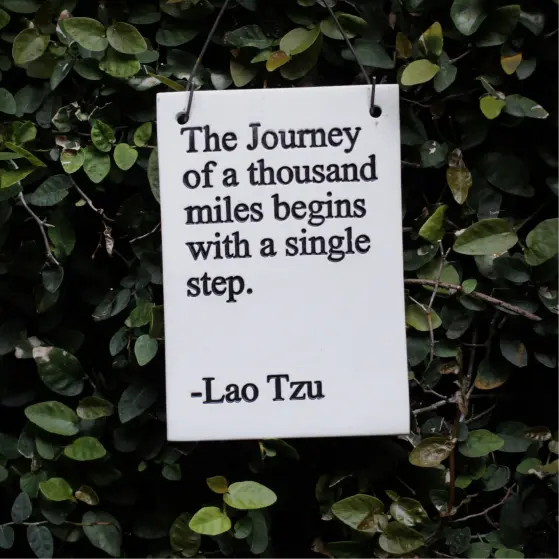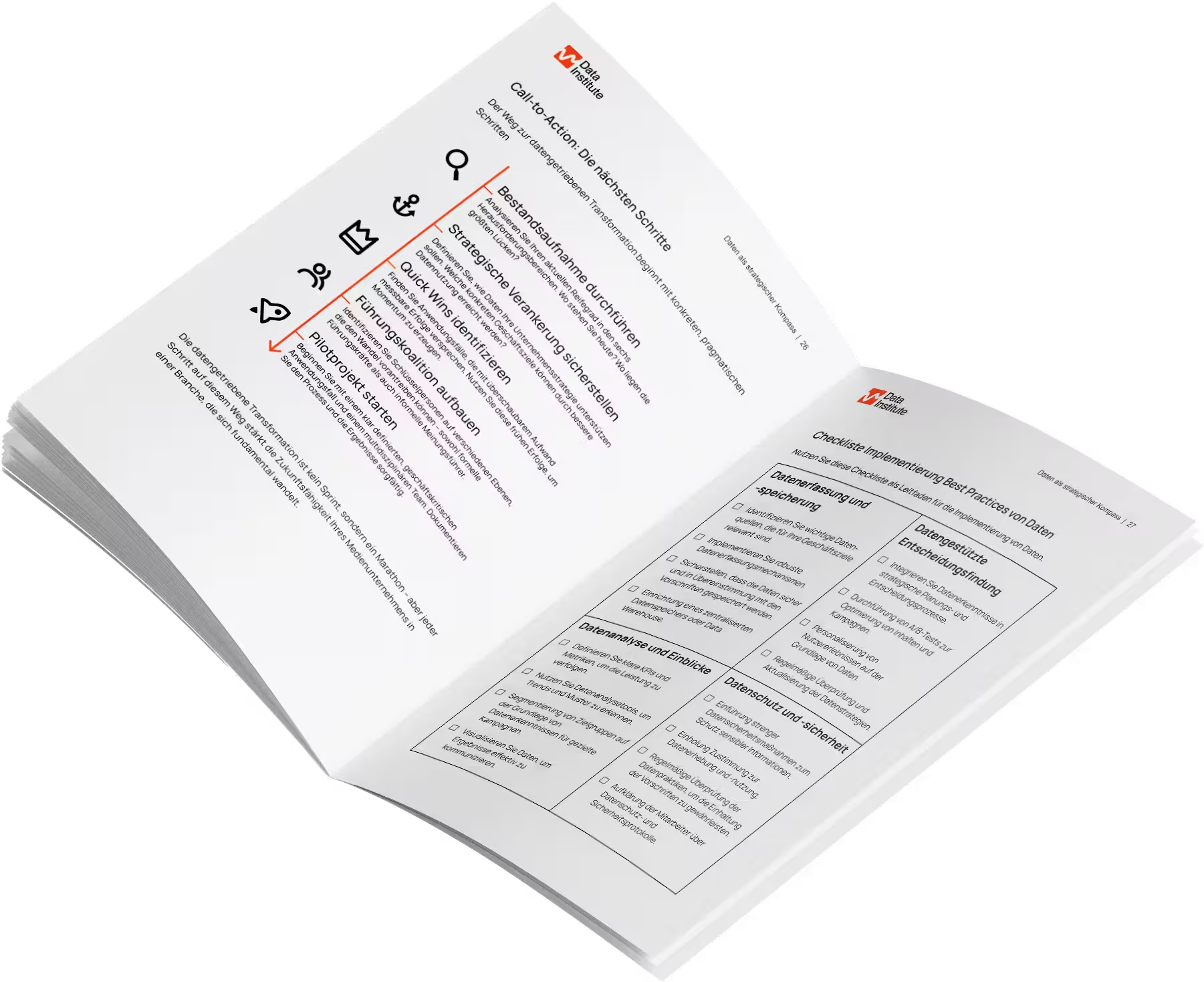Establishing the digital mindset: strategies for change


The roadmap for data-driven transformation
The ePaper shows you strategies, success stories and a checklist for a direct start into the digital future.

- Das ist eine H2
- Das ist eine H3
TLDR: After years in various management roles — from corporations to consulting agencies to tech companies — I share four proven strategies for overcoming cultural resistance: Communicating the “why” transparently, targeted empowerment, rapid success and genuine participation. Without exemplary leadership, none of them work.
In the first part of this series, I showed why that human mindset is the biggest hurdle in digital transformation represents. From fear of change to stubborn silo thinking to a “gut feeling about facts” mentality — the cultural stumbling blocks are real and should not be ignored.
Today I'm sharing with you the strategies I've experienced, co-developed and refined during my years as a manager. As co-founder of The Data Institute These experiences from corporations, consulting agencies and technology companies flow directly into our approaches.
After many attempts, mistakes and successes, four approaches emerged that make the difference:
Strategy 1: The power of “why” — transparent communication as a basis
“People need the 'why' before they accept the 'how.'”
In a large consulting firm, I experienced the following situation: The management announced a new “data-driven way of working” via e-mail and in a short company-all-hands slot. The result? Shrug your shoulders and do business as usual. Why Because no one had understood why this change was necessary. And in addition, their managers did not set an example and actively supported it.
Communicate the specific “why”
The biggest communication trap that I see time and time again: Managers talk about abstract goals such as “digital excellence” or “data-driven decisions.” But employees hear: “More work for me” or “I don't trust your opinion.”
What works instead:
- Show personal added value: “This automation saves you 2 hours of reporting work every day”
- Address specific problems: “We make too many decisions blindly — that costs us revenue”
- Make vision tangible: Use storytelling with real examples from your own company
Strategy 2: Empowerment instead of overwhelming — Competence as a confidence-builder
“Knowledge creates trust, ignorance feeds resistance.”
The experienced creative director from my first part? After an individual workshop where she learned how data is her intuition complement (not replace), she became one of the strongest advocates of our data strategy.
Role-specific competency
A mistake I made early in my career: I thought everyone needed the same “data skills.” Wrong. A salesperson needs different skills than a controller or as a marketing employee.
My proven approach:
- Creative teams: Workshops on “Data as a Source of Inspiration” — Not as a Creativity Killer
- Sales teams: Practical sessions on “Data that helps sell” with real customer examples
- Management: Executive briefings on “data-based management decisions” with honest and transparent peer learning
Hands-on instead of theory
I once conducted a four-hour “data literacy training” in a consulting agency. The response? Yawning. The next time, I took real campaign data with me and showed in 30 minutes how an ongoing campaign could have achieved 40% better results through simple data analysis if the data had been analyzed correctly and objectively. that was the turning point.
What works:
- Real company data use sample data sets instead
- Instantly applicable insights teach theoretical concepts instead of
- Peer learning Encourage: Colleagues learn best from colleagues
Strategy 3: Quick Wins - Visible successes create unbeatable momentum
“Quick wins create trust — big visions alone are not enough.”
The top sales performer who kept his Excel lists like a treasure? I didn't convince him with arguments. In a pilot project, I showed him how shared data helped his team generate more deals and the lived transparency also led to more trust. After he was convinced.
Start small, think big
My rule of thumb: A Quick Win must deliver measurable results within 8-12 weeks. Not anymore — otherwise you'll lose attention.
Successful Quick Win examples from my practice:
- Consulting agency: Automation of weekly client reports → 75% time savings. And achieved an additional benefit: “The meeting could have been an email:)”
- Tech companies: Dashboards for the customer success team → 40% faster problem identification
Communicate successes correctly
A quick win that is not communicated is wasted momentum. I've learned: Stories sell better than statistics. Preferably shared directly by the teams in the company and not by the consultants.
My communication strategy:
- Before/after stories with specific time-saving examples
- Team Spotlights: The successful pilot teams become internal “heroes”
- Roadshow format: Successful teams present their learnings to other departments
Strategy 4: Participation — turning people into co-creators
“Whoever is part of the solution becomes an advocate.”
My biggest transformation was achieved in an organization in which the manager not dictated from above what to do. Instead, asked, “What problems could data solve in your day-to-day work?” The best ideas came from the teams themselves.
Data Champions Programs
In one of my most successful projects, I identified 1-2 “data-curious” people in each department — people who showed interest of their own accord. I turned them into “data champions.”
Your mission:
- translators be between their teams and data experts
- First point of contact for data-related questions in your department
- Feedback channel for practical problems and suggestions for improvement
The result: 89% acceptance rate for new data-driven processes — because the solutions came from the teams themselves.
Co-creation instead of top-down
A lesson I learned the hard way: The best technical solution is worthless if it ignores the real needs of users.
My proven approach:
- Design Thinking Workshops with end users instead of “just” the IT department
- Prototyping sessions: Test and iterate early versions together
- Regular feedback loops: Monthly “What's going well/What's annoying” rounds
The key ingredient: leadership that exemplifies change
“Leadership must set an example - what management doesn't do, no one does.”
All of these strategies stand or fall with one thing: authentic guided tour. I've seen transformations fail because leaders preached digital strategies but continued to make their own decisions “from the gut.”
What exemplary leadership means
In my most successful projects, I have established the following behavior in myself:
Consistent use of data:
- Every strategic meeting starts with relevant KPIs
- Gut decisions are constructively questioned: “Which data could help us here?”
- My own mistakes are communicated transparently: “I should have listened to the data here”
Active Support:
- Show presence at data literacy workshops
- Provide budget and time for experiments
- Actively remove obstacles
Recognition and strengthening:
- Publicly recognize successful data-driven decisions
- Highlight “data heroes” in team meetings
- Reward the courage to experiment, even when they don't work
The psychological factor: What really motivates people
After years of leadership work, I've come to understand that people don't change their behavior because of rational arguments. They change it when three basic psychological needs are met:
Autonomy: “I can decide for myself”
Instead of mandating data usage, I give teams the freedom of choice: “Here are the tools and data available.” “Decide for yourself what helps you the most.”
Competence: “I can do that”
Every new skill starts with a early sense of success. That's why I always start training with simple yet impressive analyses.
Meaningfulness: “That's important”
People must understand like your contribution brings the big picture forward. “Your accurate data helps our product team build better features” is more motivating than “Please fill out the dashboard.”
My conclusion: Transformation is a marathon, not a sprint
Establishing a digital mindset is like redesigning a garden. You can't just throw new seeds on unprepared soil and hope that something grows quickly and perfectly.
The soil must be prepared:
- Old habits (such as silo thinking) must be broken
- nutrients (like data literacy) must be added
- The right conditions (such as psychological safety) must be created
- Continuous care (like regular feedback) is necessary
Only then can the new approaches flourish and produce a rich harvest.
The four strategies I've shared today are the result of many years of trial and error in a wide variety of contexts. They work — but only if they are used authentically and consistently.
In the next part of this series, I'll show you how to use these strategies concretely be able to implement in your company. With checklists, timelines, and pitfalls that you should avoid.
What are your biggest challenges when it comes to cultural change? Which strategies worked in your context — or didn't they? Write to me — I am happy to share further insights from my practice. Or do it right away an appointment with me.
As co-founder of The Data Institute I incorporate this experience from various industries and leadership roles directly into our consulting approaches. Because in the end, it is not the best technology that determines success — but the people who use it.
Picture: Hester Qiang nsplash

Digital transformation is a marathon
Subscribe to our newsletter and follow our transformation projects.
Digital transformation is a marathon
Subscribe to our newsletter and follow our transformation projects.

Digital transformation is a marathon
Subscribe to our newsletter and follow our transformation projects.

Related case studies
There are suitable case studies on this topic





